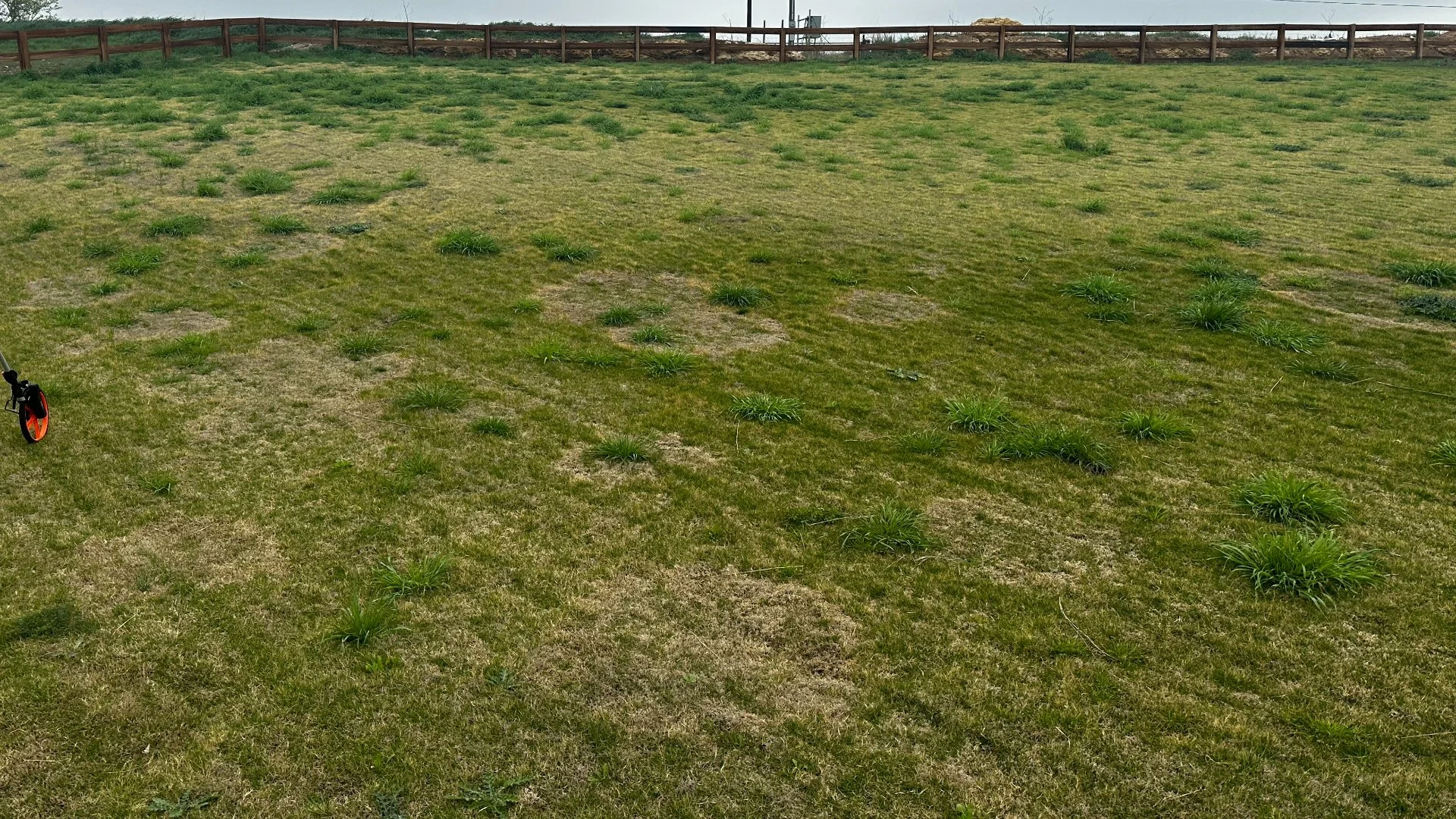Unfortunately, lawn fungus is an inevitable part of a lawn's life. Here in Texas, warm-season lawns often struggle with lawn fungus in the fall because of the weather conditions during this season. The combination of warm temperatures and moist conditions provide an ideal environment for the fungus to thrive and disease to develop. When your lawn is affected by a lawn fungus, you should avoid fertilizing it to prevent the disease from spreading even further. The best thing you can do is apply fungicide treatments to eliminate the fungus and nurse your lawn back to health through fertilizer treatments once the disease is eradicated.
Why is a fall a common time to deal with lawn fungus?
Fall is a common time to deal with lawn fungus because of the weather conditions during this season. Fungi love warm and humid conditions, which are prevalent during the fall. The warm temperatures combined with wet and humid conditions in the fall create the perfect storm for fungus development. This is problematic because lawn fungus can cause serious damage to lawns that it infects. As the disease progresses, more and more turf will become damaged, making it crucial to deal with the disease as soon as possible.
What should you not do when dealing with lawn fungus?
When a lawn fungus plagues your grass, your grass will become weak and can grow slowly. Most people's first instinct might be to fertilize their grass, but don't! The last thing you want to do at the onset of a lawn fungus is to feed your grass with a fertilizer treatment because you're risking spreading the infection to healthy grass in other areas. You'll want to isolate the issue to what's currently affected so the issue doesn't become more serious. It's also best to avoid watering your grass excessively. Because fungus loves humid and moist environments, you don't want your lawn to consistently be wet because it can continue to flourish and cause more damage to your turf.
What should you do when dealing with lawn fungus?

As soon as you see signs of lawn fungus on your grass, prompt intervention is crucial. The first thing you should do is consult a lawn care professional to correctly identify the issue and pinpoint what kind of fungus is affecting your grass. This ensures the proper fungicide treatment is administered on your lawn and the fungus is correctly targeted to completely eradicate it. Fungicide treatments will stop the fungus from progressing so it doesn't wreak any more havoc on your lawn.
Once the fungus has been taken care of, your next course of action is to help your lawn recover. The best way to do that is through a nourishing fertilizer treatment. Fertilizers provide essential nutrients like nitrogen, phosphorus, and potassium that your grass needs to become stronger and get back on its feet after suffering from a fungus. You'll also want to apply a premium soil mix to create an ideal environment on your property for robust grass development!
Give us a call today to schedule our lawn disease control service!
Here at Purple Care, we offer a lawn disease control service to commercial and residential properties, as well as HOAs, in Fort Worth, Arlington, Weatherford, TX, and surrounding communities. Our team provides treatments that can target various lawn diseases, like take-all root rot, brown patch, and gray leaf spot. With 30 years of experience, our team can properly diagnose your lawn and administer the right treatment to give you stellar results. Give us a call today at (817) 880-6052 to enroll in our lawn disease control service.




Comments (0)
Thanks for your comment!
Thanks for your feedback! Your comments have been successfully submitted! Please note, all comments require admin approval prior to display.
Error submitting comment!
There is a problem with your comment, please see below and try again.